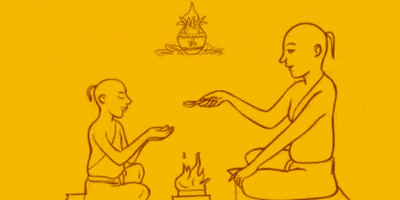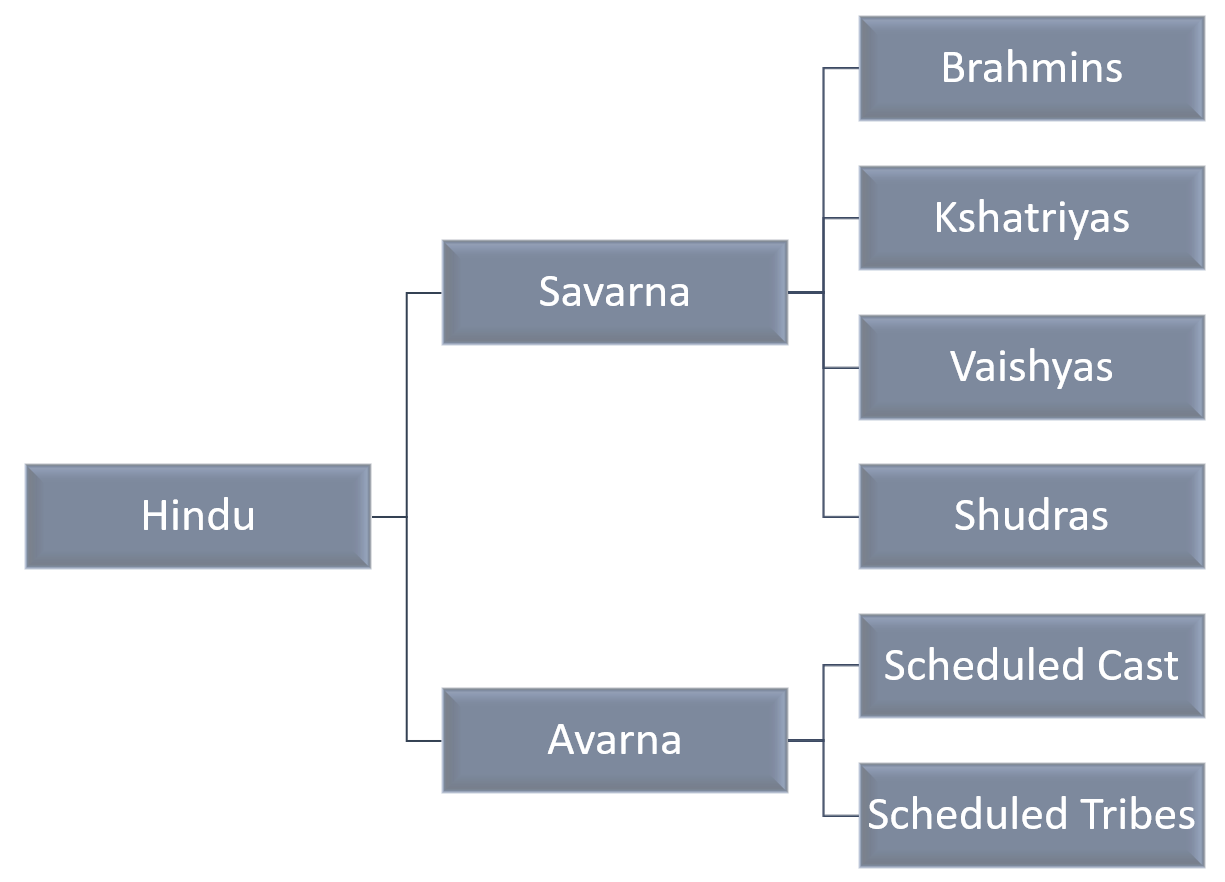The twice-born (Dvija)
It is a belief that a person is born two times, the first-born physically and at a later date is born for a second time spiritually it is called "dvija" in Sanskrit which means "twice-born". The second birth occurs when one takes up fulfilling a role in society, at the time of the Upanayana initiation ceremony. by this time a Brahmin is initiated into school to study and pursue Brahmopadesha (preach, counsel) in the matter of the nature of Brahman, the ultimate reality. Traditionally, a Kshatriya would start learning the use of arms, while a Vaishya would start a trade apprenticeship.
 |
| The Upanayanam thread ceremony marking initiation as a Dvija. |
The first significant appearance of the word Dvija occurs in the Manu Smriti composed between the 2nd to 3rd century CE. then the word Dvija is mentioned in Valmiki Ramayana and Mahabharata also. states Patrick Olivelle, suggesting that Dvija is not a Vedic or ancient tradition of Hinduism, but an innovation that appeared sometime in the 1st millennium CE.
Upanayana initiation ceremony
The initiation ceremony (upanayana) invests the male initiates with a sacred thread, a loop worn next to the skin over the left shoulder and across the right hip. his Dvija-ceremony was recommended in medieval era texts for the Brahmins (priests and teachers), Kshatriyas (warriors), and Vaishyas (merchants) before they began their schools. In contrast, the Shudras were considered ineligible for Dvija-ceremony and formal schooling in these texts.
The Hindu texts offer a conflicting view of whether access to guru and education was limited to men and to certain varna (social classes or castes). whereas the Vedas and the Upanishads never mention any restrictions based either on gender or on varna.

